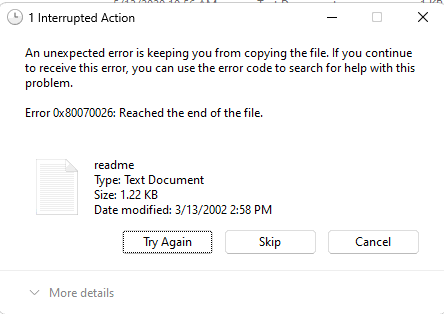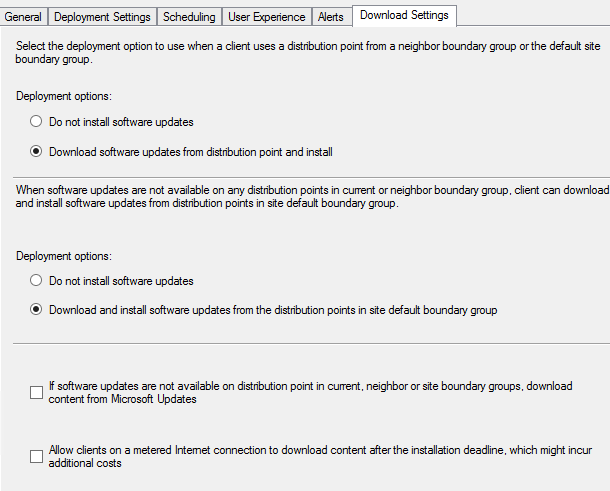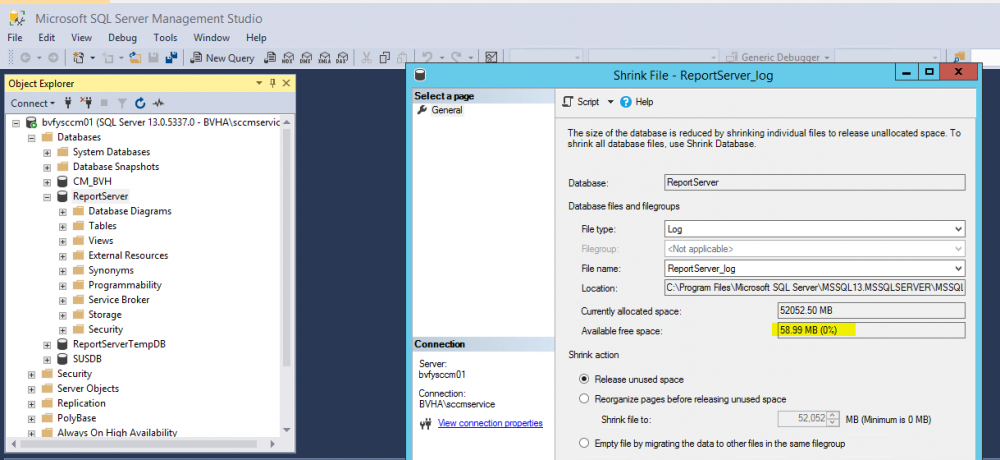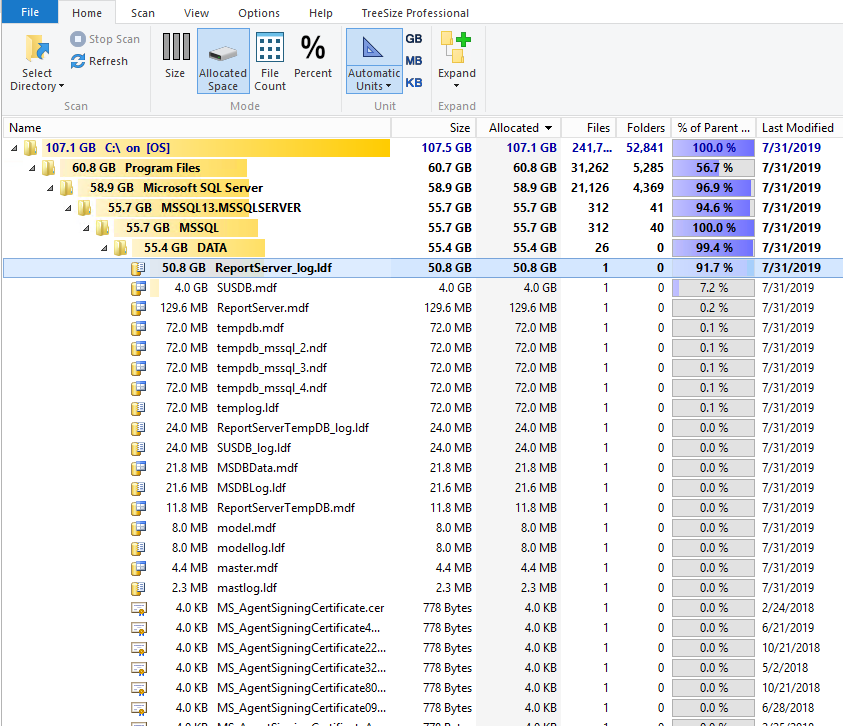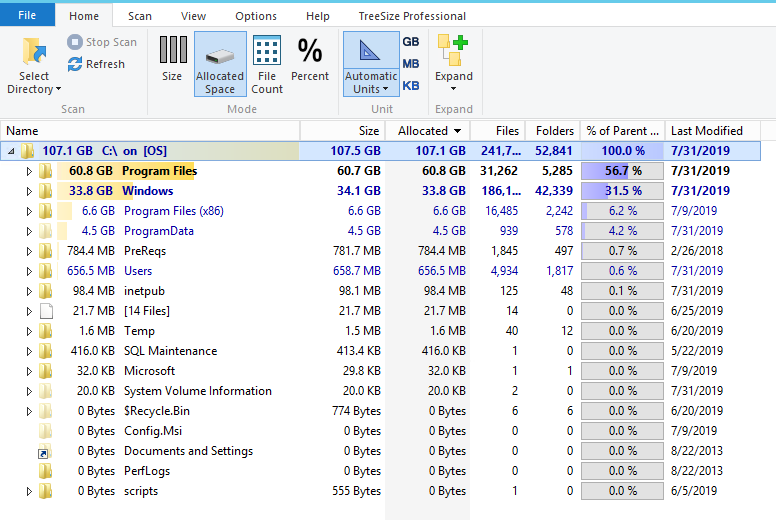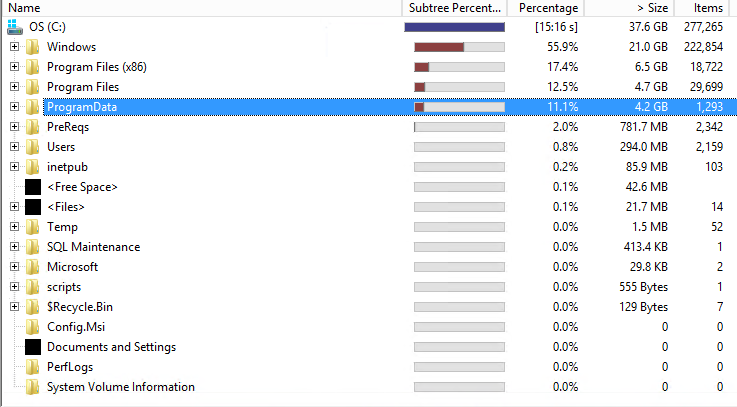-
Posts
129 -
Joined
-
Last visited
-
Days Won
1
Everything posted by nhottinger
-

Error 0x80070026: Reached the end of the file
nhottinger replied to nhottinger's question in Windows 10
That was the case. It's an issue with Windows 11 v.22621.382. Upgraded to .2506, then 23H3 and both worked flawlessly. -

Error 0x80070026: Reached the end of the file
nhottinger replied to nhottinger's question in Windows 10
After more digging, it seems like it's an OS version issue. I'm running 22621.382 on this test machine and has the issue. On 22621.2506 there is no issue. I'm working on downloading the newest versions and testing that. -
We are testing a new Windows 11 Image through SCCM. This is not an SCCM issue. After imaging I realized a few steps were not completed and include an xcopy command to copy files to the local system. When I try to manually copy the files from a 2008 file server, I get an error: Error 0x80070026: Reach the end of the file. It's weird, but I can copy a jpg file from the same folder, but not a txt or exe or bat. I am able to copy files from a 2016 file server, but not this one. There has to be some kind of security setting on this new Win11 device that is blocking this. I've tried just about everything I've found online. Other windows 11 devices that were not imaged via SCCM work just fine. Other Windows 10 device imaged with SCCM work just fine. It's just this new Win11 image. Any ideas?
-
Thanks for the response. I see that settings "if software updates are not available...download content from Microsoft Updates" however, the way I read that is if the dist point is not available go to MS, but if it is available to go SCCM. We want all remote devices to go to MS instead of SCCM to reduce traffic over the VPN.
-
Currently running SCCM 2111 on prem. No cloud presence, no CMG, not using Intune. Management wants to make sure our remote users are getting windows updates through Microsoft and not coming back through the VPN for updates from SCCM. What are my options and any documentation on how to set it up would be helpful.
-
We are currently running CM 2111 (HF KB12896009) on Server 2012 r2 and need to setup a new server. We are running out of disk space and it can't be increased. Is there a guide I can follow to bring up a new box and migrate everything to the new server as easily as possible?
-
I do have a lot, but most of them are fron the Endpoint Protection Updates that get created multiple times a day. Should I just go through and remove all the stale update groups or is there a preferred method? ** Update ** That seemed to do the trick. I got rid of a lot of SUG's and I can now see the current update groups I created. This is a huge relief. Are they any other maintenance tips I should be following from a manual standpoint, not something that is already automated in SCCM?
-
I've posted other places online and searched for someone else with the problem and I'm coming up empty. Here's the deal, I'm pretty sure it started right after I upgraded to 2010 (now on 2103). When I create a software update group with updates in it, the software update group is no longer visible for me under the Software Update Group area. I'll add a picture and explain a bit more. Here's my normal process that used to work. I would select the updates I wanted to roll out to a test group. Download and Deploy them which would automatically create the software upgrade group that I named. Once the testing was complete and verified working, I would go to the Software Update Groups area and find the group I just deployed to the test devices and deploy it again to the entire org. Now after the 2010 upgrade, I no longer see any of the software update groups I've created. In the image, you will see that there are no groups showing after the 5/20/21 date (with the exception of the 21H1 group and I'm honestly not sure how I got that one to show up.
-
I setup a configuration item and baseline to remove an icon on the Public desktop but it's not working. Here's my setup: SCCM Current Branch 1910 Configuration Item - Settings - looks for C:\Users\Public\Desktop - shortcutname.lnk. Compliance rules must not exist on client devices. Configuration Baseline - I added the configuration item to the evaluation conditions and deployed to group as usual. Even setting the evaluation time to 1 minute, it has not removed the icon after 2 days. What did I do wrong?
-

C:\ drive Full
nhottinger replied to nhottinger's topic in System Center Configuration Manager (Current Branch)
-

C:\ drive Full
nhottinger replied to nhottinger's topic in System Center Configuration Manager (Current Branch)
Thank you. I'll see what I can do. -

C:\ drive Full
nhottinger replied to nhottinger's topic in System Center Configuration Manager (Current Branch)
-

C:\ drive Full
nhottinger replied to nhottinger's topic in System Center Configuration Manager (Current Branch)
-

C:\ drive Full
nhottinger replied to nhottinger's topic in System Center Configuration Manager (Current Branch)
-

C:\ drive Full
nhottinger replied to nhottinger's topic in System Center Configuration Manager (Current Branch)
I used WinDirStat and show that the WinSxS folder is eating 8.5Gb, but can't get rid of those. The largest space SQL related is the Update Cache, but only 1.5gb -
We are running 1902 with the Hotfix rollup. Server 2012 R2, 32GB RAM. OS is installed on C:\ (102GB), SQL DB installed on E:\ (199GB), and SCCM is installed on F:\ (1.70 TB). My C:\ drive is completely full, ie 0 bytes free. What can I do to free up some of this space so I can actually use the Admin console again? I've tried to go through and clean up things but there isn't much else I can do (that I know of). Is my C:\ drive just not big enough or will it just fill up more if we add space? Any help would be appreciated.
-

Disable User Account Control during OSD
nhottinger posted a question in Deploy software, applications and drivers
I just updated our Windows 10 image with the newest 1903 version. Previously in my 1803 image, I used a cmd to turn off User Account Control during the task sequence using the following: cmd.exe /c reg add "HKLM\Software\Microsoft\Windows\CurrentVersion\Policies\System" /v "EnableLUA" /t REG_DWORD /d 0 /f That had been working just fine. I took the exact same OS Task Sequence and just changed the OS image package and now every user, including administrators, are prompted when an .exe runs. (specifically whoami) which puts username, IP, ect on the desktop which makes supporting these devices much easier. Running other .exe's don't bring up this prompt from what I can tell so far. I verified UAC is actually set to not notify. Why does this app bring up the notification every time?- 1 reply
-
- whoami
- user account control
-
(and 1 more)
Tagged with:
-

Windows Defender / Endpoint Protection
nhottinger replied to nhottinger's question in Endpoint Protection
That definitely helps! I was racking my brain trying to figure out why it didn't show up. -

Windows Defender / Endpoint Protection
nhottinger replied to nhottinger's question in Endpoint Protection
I'm noticing that on some of my devices, the SCEP icon does not show in the taskbar to be able to run manual scans. Is this normal? Even thought the software shows in Programs and Features, it's not in the taskbar. I guess maybe I'm a bit confused. I've setup SCCM with all the antimalware policies and other settings. Do I even need to install the SCEP client on Windows 10 machines? All I have on them is Windows Security, did that take the place of Windows defender? -
We are getting ready to get rid of our AV solution and are looking to use SCCM Endpoint Protection instead. Is this enough? Are we still going to be protected as we were with a full blown AV? We are fully Windows 10 going forward. Is there a document that will walk me through setting this all up? Is there a way to setup email alerts when a virus / malware / other security alert is found? Anything else we need to know before starting?
-

MBAM on SCCM Server
nhottinger replied to nhottinger's topic in System Center Configuration Manager (Current Branch)
We have about 3000 pc's this would be used for management. Would that fall under the "large number"?




